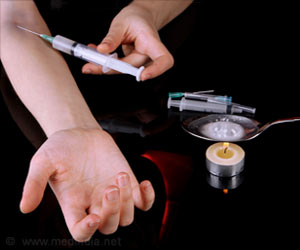Researchers are gaining new insights from patients who are no longer addicted to nicotine after experiencing a brain lesion, such as a stroke.
“By looking beyond individual brain regions and, instead, at the brain circuit, we have found targets for addiction remission and are eager to rigorously test them through clinical trials,” said Michael Fox, MD, PhD, of the Department of Neurology at the Brigham. “Ultimately, our goal is to take larger steps towards improving existing therapies for addiction and open the door for remission.”
Advertisement
Neuromodulation therapies, such as deep brain stimulation, transcranial magnetic stimulation, and MRI-guided focused ultrasound, allow clinicians at the Brigham’s Center for Brain Circuit Therapeutics to directly target brain circuits and improve symptoms in ways that may not be possible through treatment with medication.
Lesion Network Mapping Helps Patients with Substance Abuse Disorders
But knowing the location to target is critical. In a previous study, researchers used lesion network mapping to examine patients whose essential tremors resolved, confirming targets used in treatment with deep brain stimulation. The study authors set out to apply the same approach to addiction remission.
“Although we know a great deal about the neurobiological mechanisms in addiction, treatment options are still very limited. Our findings with essential tremor made us realize the potential of this approach to localize key brain circuits mediating symptom improvement,” said Juho Joutsa, MD, PhD, of the Turku Brain and Mind Center and Clinical Neurosciences at the University of Turku.
Fox and colleagues used data from two independent cohorts of patients addicted to nicotine who then suffered a brain lesion, usually from a stroke. Fox’s team compared lesions in patients who were unable to quit smoking to lesions resulting in remission of smoking addiction.
They then used a database known as the human connectome to map each lesion to the larger brain circuit. They found that the two smoking lesions datasets that led to remission of smoking addiction mapped to a specific brain circuit.
To their surprise, they also discovered in a third alcoholism lesion dataset that a reduced risk of alcoholism mapped to a similar brain circuit, suggesting a potential therapeutic, targetable neural pathway for addiction in general rather than addiction to a specific substance.
“Although neuromodulation treatments using electricity or even brain lesions have shown promise in relieving substance addiction, the therapeutic target has been unclear,” said Fox.
“Now that our study has identified a target a specific human brain circuit we hope to test whether targeted neuromodulation to this brain circuit provides sustainable symptom relief to our patients.”
The authors acknowledge two primary study limitations. First, the results are solely based on retrospective analysis of existing datasets and, second, the datasets examined only covered specific substances of abuse.
The researchers therefore advocate for prospective validation of their findings through clinical trials testing and an examination of additional substances of addiction to determine if their findings can be applied widely.
“We were excited to discover that our mapped lesions associated with addiction remission led back to a common brain circuit. While our findings point towards therapeutic targets for addiction, we need to test these targets in randomized clinical trials,” said Fox.
“We study brain lesions in the context of the brain circuit because it provides a powerful way to understand the causal links between addiction and our neuroanatomy. We have hope that we can make significant strides towards helping patients with substance use disorders.”
Source: Eurekalert



